In this article, I’ll review the 10 compatible best lenses for Canon EOS M6 Mark II, your new mirrorless camera.
I’ll cover different lens types such as prime, zoom, telephoto, wide-angle, etc.
We are going to analyze which lenses are best for which avenues of photography.
I’ll discuss the details, pros & cons and tech specs of various compatible prime and zoom lenses so you’ll know enough about them that you’ll feel like you could create one yourself!
And at the end, you’ll see an insightful and actionable Buyers Guide to further assist you to pick your best lens for Canon EOS M6 Mark II.
Let’s start with our Editors’ Picks.
Best Overall Prime Lens
Canon EF-M 32mm f/1.4 STM
A nice lightweight prime lens with standard 32mm focal length, quick and quiet autofocus while shooting or using video, and an incredibly bright aperture of f/1.4, which is perfect for low-light photography situations as well.
It has also a rounded seven-blade diaphragm to produce some beautiful background blurs (bokeh).
This is indeed a great choice for beginners in photography or videography!
Best Overall Zoom Lenses
Canon EF-M 11-22mm f/4-5.6 IS STM
A valuable wide-angle zoom lens with strong resistance against any aberrations, ghosting and lens flare.
A rounded seven-blade diaphragm ensures some great background blurs.
This is a great choice for landscape, architecture and real estate photography with your Canon EOS MG Mark II.
Tamron 18-200mm f/3.5-6.3 Di II VC
A weather-resistant, flexible, and budget wide-angle to telephoto zoom lens with quick and near-silent autofocusing.
With this zoom lens, you’ll be shooting with a rounded seven-blade diaphragm, which let you to capture some beautiful bokeh.
If you’re unsure about what you want to be shooting, or if you feel your type of photography will change week to week, day to day, then this budget-friendly zoom lens is the “all-around” option for your Canon EOS MG Mark II.
Best Budget Prime Lens for Canon EOS M6 Mark II
Canon EF-M 28mm f/3.5 Macro IS STM
A budget-friendly macro, standard-length prime lens with a built-in front-facing Macro Lite LED for further illumination and less aberrations to deal with.
A rounded seven-blade diaphragm is in place for producing pleasing bokeh.
This is your best lens for Canon EOS MG Mark II, if you’re going to be shooting the small subjects and fine details.
Best Value Prime Lens
Rokinon 12mm f/2.0 NCS CS
A wide-angle prime lens with a bright aperture of f/2.0 with less chromatic aberrations and the best color accuracy at wide angles.
Consider this lens for low-light landscapes, architectural or real estate photography.
Ah yes, the Canon EOS M6 Mark II.
A big fan favorite you’ll likely notice while out surfing the web for mirrorless cameras.
Canon has an impressive line of several cameras, this being one special of many.
Some things to note about this camera, though not on the lighter side among cameras, it definitely possesses amazing ability with flash photography.
It’s great for continuous shooting. Excellent for time-lapse recording.
Yeah, it does a lot of things fantastically.
So, what are the compatible best lenses for Canon EOS M6 Mark II?
Well, this will depend on a couple of things. Mainly, what is your definition of “the best”?
Does the lens need to have great aperture?
Great zoom capability?
Are you the telephoto type or more macro?
Do you dream and shoot in vivid colors or do you prefer striking black and white shots?
It’s all up to you what means “the best” and it’s all up to me to help you sort through all these incredible lenses and find your best lens for your Canon EOS M6 Mark II.
So, let’s start right away with the reviews.
Read also: Best Lenses for Canon EOS M50 Mark II
Read also: Best Lenses for Canon EOS R6
Read also: Best Lenses for Canon EOS R5
Read also: Best Lenses for Canon EOS M200
Read also: Best Lenses for Canon EOS-1D X Mark III
Read also: Best Lenses for Wildlife Photography
Read also: Best Lenses for Sports Photography
Read also: Best Lenses for Car Photography
Read also: Best Lenses for Real Estate Photography
What are the Best Lenses for Canon EOS M6 Mark II in 2020?
Quick Answer:
Best Prime lenses for Canon EOS M6 Mark II
Best Zoom lenses for Canon EOS M6 Mark II
Comparison Table for the Best Prime lenses for Canon EOS M6 Mark II
Comparison Table for the Best Zoom lenses for Canon EOS M6 Mark II
Best Prime lenses for Canon EOS M6 Mark II (in 2020)
1. Samyang 10mm f/2.8

This wide-angle Samyang 10mm f/2.8 prime lens is the widest-angle lens we are reviewing.
With 10mm focal length, it’s a great choice for landscapes, architectural and real estate photography.
The aperture of f/2.8 is decent, but is one of the lowest of the prime lenses we are reviewing. Among the wide-angle prime lenses, it’s the lowest one.
This Samyang lens has a manual focus design. With this you are able to have selective control over the focus.
Fantastic news if you desire great focus control.
More fantastic news, a Nano crystal anti-reflection coating system is applied to the lens elements to supremely suppress ghosting and lens flare.
This lens will make that the least of your worries while shooting.
The diaphragm has six blades, which is going to be alright for producing nice bokeh.
It has a Minimum Focus Distance of 24cm, which is higher than most of the other lenses.
With this wide-angle prime lens, you’ll have one extra-low dispersion element and two aspherical elements.
You’ll be blocking out multiple types of aberrations quite well, and the number of elements you have are quite good compared to all the other primes.
This lens weighs 590 grams however, making it the heaviest lens. A good detail to note, in case you plan on holding on to this lens for long periods of time.
It also costs about $379, making it one of the most expensive prime lenses in the list.
Pros
- Widest angle at 10mm
- Good number of elements; tied with the Rokinon 12mm for most aspherical elements
- Has the incredible nano crystal anti-reflection coating for suppressing ghosting and lens flare
Cons
- Aperture is okay, lowest of the wide-angle prime lenses
- Only decent for bokeh
- The heaviest prime lens in my list
Expert Opinion:
2. Rokinon 12mm f/2.0 NCS CS
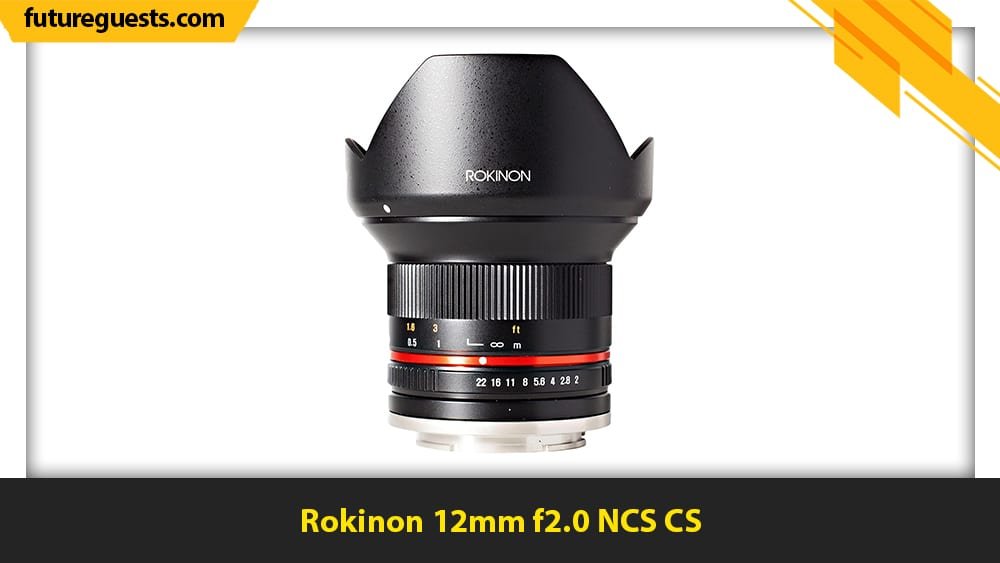
Now, we have another wide-angle prime lens, the Rokinon 12mm f/2.0 NCS CS which differs from the previous one in several ways.
First, let’s note that the 12mm focal length doesn’t give you as wide of an angle as the last.
You’ll need to decide if every millimeter count for your shots or not.
A nice advantage for this, almost as wide wide-angle lens, the aperture of f/2.0 is a good deal brighter.
If you want the best lens for Canon EOS M6 Mark II, and to you that means the lens that handles landscapes in low-light situations the BEST, then it’s this one.
Think of this lens for low-light architectural and real estate photography too.
It has also a six-blade diaphragm and also has the Nano Coating system on the lens elements.
Some advantages over the previous lens, with the 12mm you get more lens elements.
Two aspherical and three extra-low dispersion elements to be exact. This is a definite advantage if you are looking for something to fight off chromatic aberrations.
Look to this lens for the best color accuracy at wide angles. It also has the most elements of all the prime lenses.
Additionally, the Canon EOS M6 Mark II is a bit heavier than some other Canon cameras. Keeping that in mind, you may want a lighter lens to not further add on to the weight.
At only 245 grams, this lens isn’t too heavy, and is far lighter than the previous wide-angle prime.
And at about $319, it’s definitely less expensive.
Pros
- Greatest number of elements of all the prime lenses
- Of the wide-angle prime lenses, a better aperture and cheaper option
- Has the incredible nano crystal anti-reflection coating for suppressing ghosting and lens flare
Cons
- Only decent for bokeh
Expert Opinion:
3. Canon EF-M 28mm f/3.5 Macro IS STM
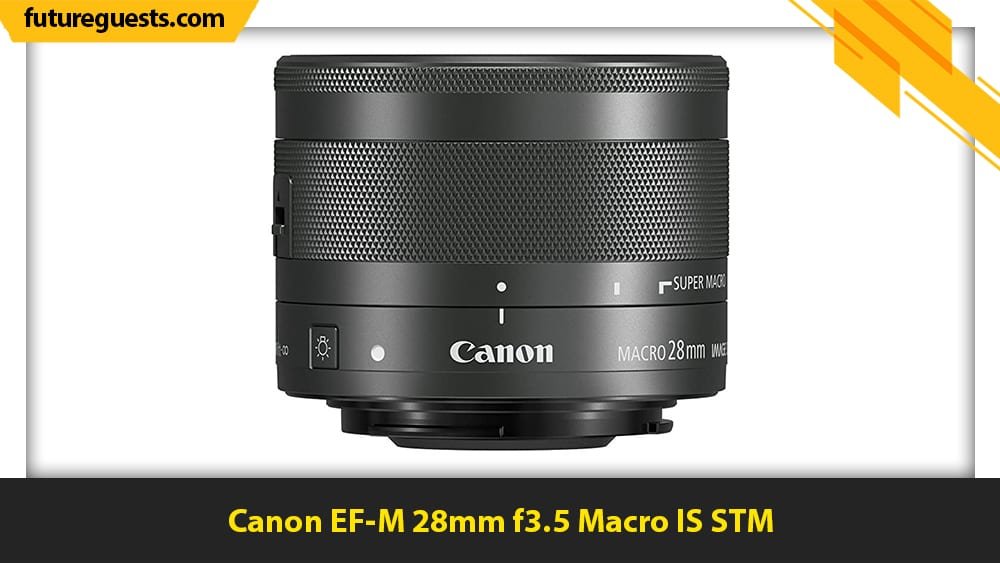
Let’s move on to a Canon macro, standard-length prime lens, the Canon EF-M 28mm f/3.5 Macro IS STM.
If you want to photograph small subjects at close distances, this macro is the way to go.
The Minimum Focus Distance with this lens is just 9.3cm.
There’s also a built-in front-facing Macro Lite LED which you can use for further illumination when you happen to be working with subjects at close distances.
You can also use this light to illuminate only the right side, left side, or both sides, so you are able to manipulate the lighting magnificently on the fly.
This lens also allows you to switch from autofocus to a full-time manual focus mode for the focusing-master in you.
As this is a macro lens you may be using for a lot of up-close photography, this can be especially helpful.
This is your best lens for Canon EOS MG Mark II, if you’re going to be shooting the small and fine details.
The 28mm is a nice standard length. The aperture is f/3.5, so compared to the next standard-length prime we will review, it is not nearly as good.
This could be a downside for you; however, as the Canon EOS M6 Mark II is known to be fantastic with flash photography and excellent in tough lighting conditions, the aperture may be a con you are willing to live with.
A decent variety of elements come with this standard-length prime lens:
one aspherical, one double-sided aspherical and one ultra-low dispersion element.
So, there are more elements than the following standard-length lens, which means less aberrations to deal with.
It has a Super Spectra Coating for the lens elements.
A rounded seven-blade diaphragm is also in place for producing pleasing bokeh.
And another great plus, it is the lightest lens of all the prime lenses, weighing only 130 grams.
That’s a nice plus for a camera on the heavier side. And all these for just $249.00, the least expensive prime lens.
Pros
- Great Macro lens for your up-close needs, and one of the best prime lenses for bokeh
- Lightest and cheapest prime lens
- Good number of elements, more than the other standard-length prime lenses
Cons
- Aperture isn’t the greatest, especially among the standard-length prime lenses
- Super Spectra Coating is decent, but not the best coating of all the prime lenses
Expert Opinion:
4. Canon EF-M 32mm f/1.4 STM
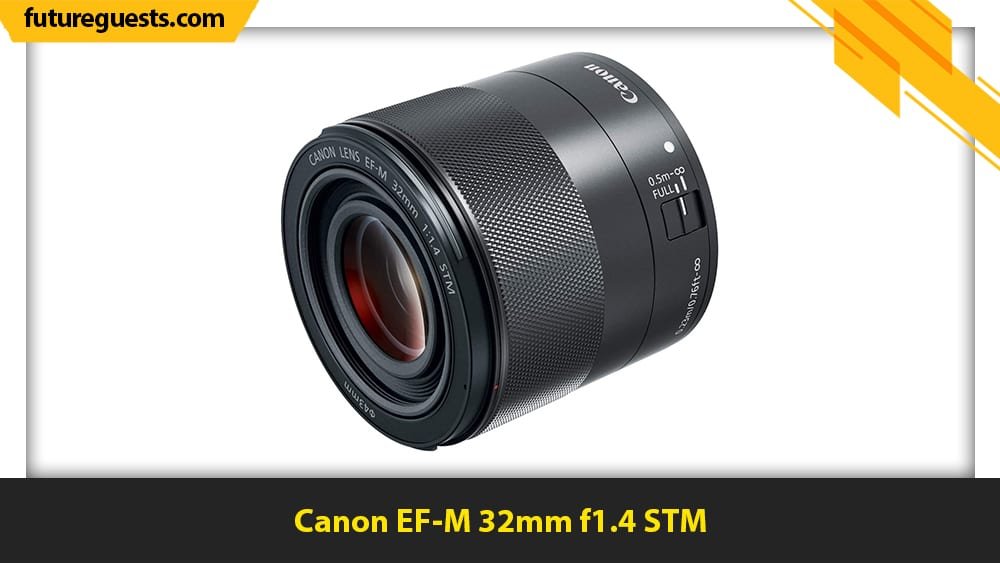
Here’s another standard-length prime lens with the 32mm focal length.
The Canon EF-M 32mm f/1.4 STM is a great lens for the photographer in you that isn’t looking for wide-angle or telephoto. Somewhere right in the middle.
This might be the best lens for your Canon EOS M6 Mark II if you don’t consider yourself a specialist in any one area of photography, but just want to create fantastic shots.
And this lens also may be grabbing your eye with its incredibly bright f/1.4 aperture.
As mentioned with the previous 28mm lens, maybe you’re not as concerned with the aperture due to the Canon EOS M6 Mark II’s great flash photography ability, but if you are, then this has the best aperture of all the prime lenses.
Low-light situations a problem for you in your work? Forget about it, grab this lens right here.
It has one aspherical element in order to limit aspherical aberrations. Not the most you can get from these prime lenses, but it can do a decent job.
It doesn’t have any low dispersion elements. In the element department, it definitely pales compared to the other standard-length prime lenses.
The Gear-type STM stepping motor might catch your interest, as it is excellent in its quick and quiet autofocus while shooting or using video.
This lens also has a rounded seven-blade diaphragm in order to produce great bokeh.
In fact, among the 5 prime lenses I suggest here, the Canon lenses are the two best for bokeh. Something to keep in mind.
The elements of this lens have Super Spectra Coating applied to them.
The lens has a Minimum Focus Distance of 23cm which is just about average.
The weight is 235 grams, which is great to note as it’s the second lightest prime lens here.
There’s plenty of great features with this lens, especially considering the aperture being far superior compared to the rest, so the price tag of about $479 is not so surprising.
However, this is the most expensive but valuable prime lens I suggest.
Pros
- Second lightest prime lens
- One of the best prime lenses for bokeh
- Best aperture at f/1.4
Cons
- Just one aspherical element and no low-dispersion elements; definitely the least number of elements among the standard-length prime lenses
- Super Spectra Coating is decent, but not the best coating of all the prime lenses
Expert Opinion:
5. Samyang 300mm f/6.3 Reflex
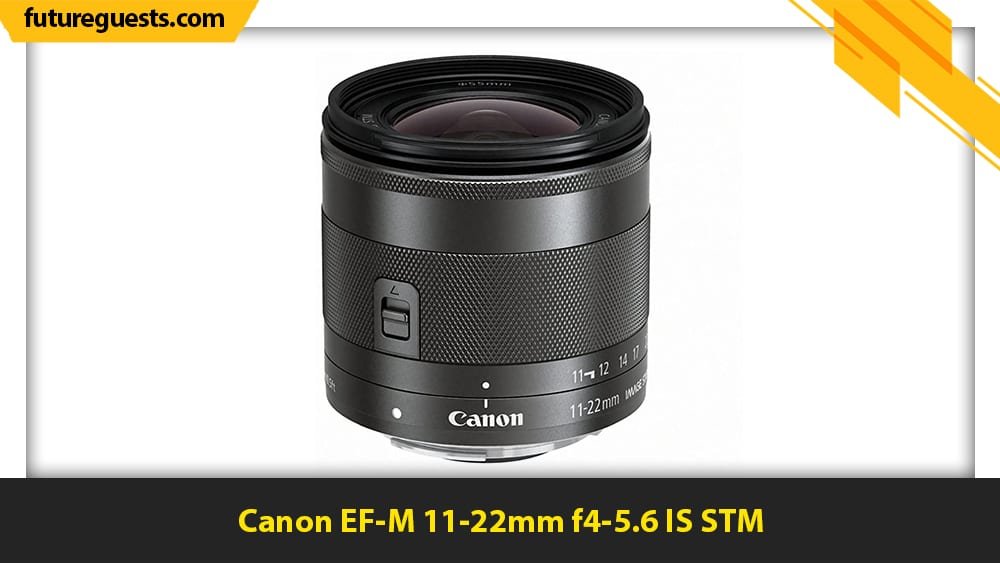
Alright, maybe we’ve reviewed some prime lenses and you’re thinking, those lenses are great and all, but where are the telephoto lenses?
Enough of the double-digit millimeter focal lengths, give me some triple digits.
Enter: the Samyang 300mm f/6.3 reflex. A phenomenal telephoto lens!
Take this one out and test drive it with subjects as far away as you like.
The aperture is f/6.3 so it is the least bright of all the apertures among the prime lenses.
This could be a downside, but the Canon EOS M6 Mark II’s incredible flash photography and great ability in tough lighting conditions could make up for a lot of that for you.
This lens is great for you if you want to capture subjects at a distance, perhaps wildlife, or from a spectator seat while watching a sports event.
With a lens that has such a large focal length, you might assume the size would be large.
But this lens comes equipped with the Catadioptric system with Cassegrain design, which helps to keep the size of the lens smaller so as not to impede upon the user.
A couple disadvantages for this lens would include the lack of diaphragm blades.
This lens would not be your choice if you’re looking to be in the bokeh arena.
Another disadvantage is the lack of aspherical elements. Spherical aberrations and distortion won’t be fought off as efficient as some of the other prime lenses.
It does have an extra-low dispersion element to prevent chromatic aberrations and color fringing.
And a UMC Lens Coating will do a decent job preventing lens flare and ghosting.
The weight of 318 grams does put it on the heavier side, but if you’re looking for a telephoto lens, you’re likely already okay with that.
And the price is just about $259, one of the cheapest prime lenses in the list.
Pros
- Best telephoto prime lens
- Not too expensive among the prime lenses
- The Catadioptric system with Cassegrain design keeps the size of this telephoto lens small
Cons
- No blades in the diaphragm so this one wouldn’t be your choice for bokeh
- Worst aperture
- Few elements
Expert Opinion:
Best Zoom lenses for Canon EOS M6 Mark II (in 2020)
6. Canon EF-M 11-22mm f/4-5.6 IS STM

Here we have a wide-angle zoom lens, the Canon EF-M 11-22mm f/4-5.6 IS STM with an 11-22mm focal length range.
The zoom range itself isn’t an impressive feat, but that nice wide angle is.
If your photography desires include getting landscape shots, architecture or real estates, and perhaps crowded interior shots but you still want a bit of flexibility, then take a look right here.
If we take a look at the aperture range on this zoom lens, we see it has f/4 – 5.6. Looking at the rest of the zoom lenses, you’ll see this doesn’t have the best aperture but also doesn’t have the worst.
It’s actually the tightest aperture range so at the very least with this zoom lens, the aperture change throughout the zoom range should be the least significant.
That’s a nice pro for you if you’re looking for aperture consistency in your endeavors.
This lens has two aspherical elements and two ultra-low dispersion elements.
Add those up together, and this lens has more elements to fight varying types of aberrations than any of the other zoom lenses.
It also boasts the most low-dispersion elements, so if your desire lies within amazing color accuracy, then this is the best lens for Canon EOS M6 Mark II.
A possible disadvantage, if you prefer control over focusing, the Focus Type is autofocus on this lens.
It has a Super Spectra lens coating to limit plenty of ghosting and lens flare.
A rounded seven-blade diaphragm for producing some great bokeh.
The weight is 220 grams, which is lighter to mid-range in terms of weight comparison among the zoom lenses.
Good to note if you’ll be photographing your landscapes for an extended period of time. This one won’t weigh you down.
With so many great features, the cost being $349.00, making it the second most expensive of the zoom lenses being reviewed, isn’t too much of a shock.
That’s still a lot that you’re getting for the money.
Pros
- Widest angle of the zoom lenses here
- Greatest number of elements to fight aberrations
- Super Spectra lens coating to limit plenty of ghosting and lens flare
Cons
- Doesn’t have the best aperture afforded to you
Expert Opinion:
7. Canon EF-M 15-45mm f/3.5-6.3 IS STM
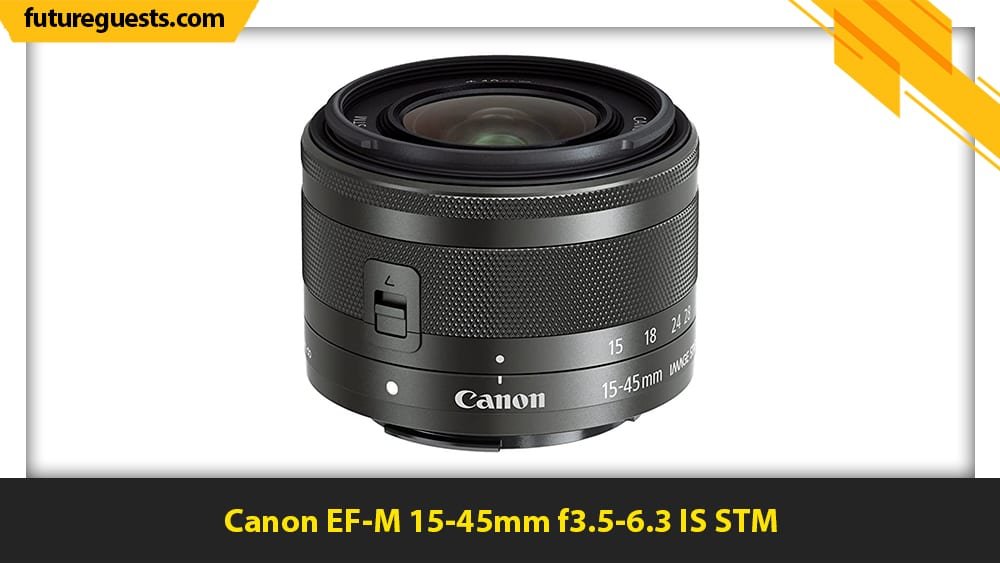
Let’s take a look at another Canon zoom lens, the Canon EF-M 15-45mm f/3.5-6.3 IS STM with a 15-45mm focal length range.
Here you’ll still get a nice wide angle while you’re given more zoom capability.
Perhaps you’re interested in some landscapes but want flexibility in how you capture them.
Maybe you want to shoot some architecture and real estate but your angle may change or the amount of room you’re given is altered. This wide-angle to standard prime lens might be for you.
The aperture is f/3.5 – 6.3, meaning it ranges from a fairly good aperture for a zoom lens, to a low-end aperture.
There isn’t consistency with the aperture, but if that isn’t of great importance to you, then you may be just fine with this lens.
Just keep in mind, with this zoom lens, you can get the best aperture and also the worst aperture.
One incredible feature of this lens is that it has three aspherical elements. One of them is glass-molded and the other two are precision-molded.
The three aspherical elements are tied for the most of any of the zoom lenses.
Spherical aberrations and distortion should be kept at bay quite well with this lens.
With the upside, there is a downside. This lens has no low dispersion elements.
Problematic for color accuracy, not so much for black and white photography.
But another upside is that it allows you to switch from autofocus to manual focus, which is a nice addition if you want to fine tune some details in that area.
Now let’s talk about why this lens could be your favorite and most convenient travel-buddy.
The 15-45mm has a helpful feature for those trying to take up less space.
A retracting feature is incorporated in its design, so you can shorten its length to just 1.75 inches.
And how about the fact that it’s the lightest zoom lens, weighing only 130 grams?
You’ll love taking this lens with you anywhere some great subjects are calling to be photographed.
This lens has a Rounded seven-blade diaphragm. Not only can you travel everywhere with it, but you can capture some great bokeh everywhere as well.
And the cost is about $299, which finds itself in the middle of the pack.
Pros
- Second widest angle of the zoom lenses with a slightly more flexible zoom range
- Lightest zoom lens; easiest to hold for extended periods of time
- Tied for greatest number of aspherical elements
Cons
- Not the cheapest zoom lens
- Aperture range contains both best and worst aperture; large variance
- No low-dispersion elements
Expert Opinion:
8. Canon EF-M 18-55mm f3.5-5.6 IS STM
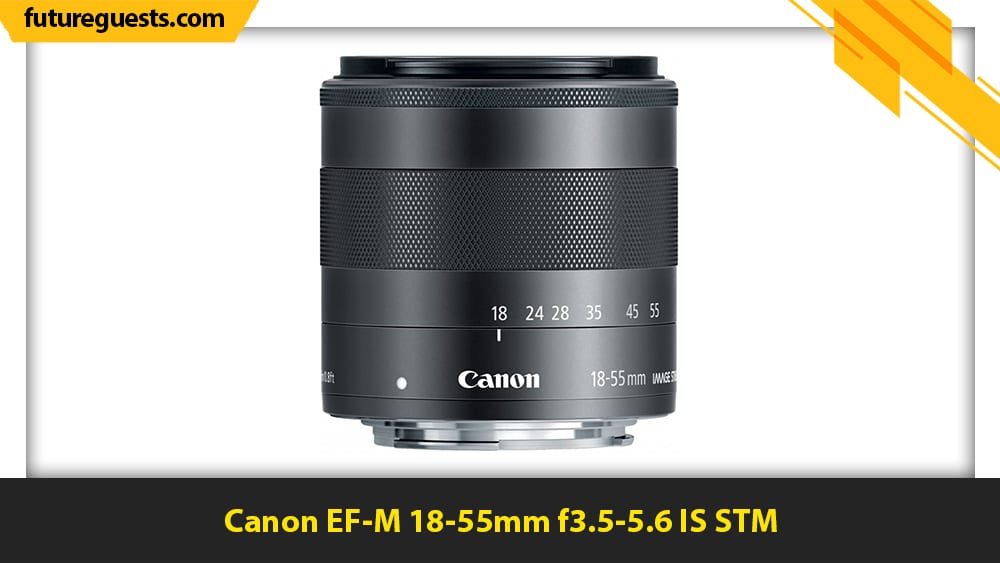
Staying in the realm of wide-angle to standard-length zoom range, we now look into the 18-55mm focal length range with the Canon EF-M 18-55mm f3.5-5.6 IS STM.
Not quite as wide of an angle as the other two, so, there’s a downside right off the top.
But a larger zoom range and a larger maximum focal length give you much more flexibility.
I like the flexibility of this one, I feel the 18mm minimum focal length range still affords you plenty of ability to capture great wide-angle shots.
I say take this one on the go. Capture some architectural beauties in the city. Exit the concrete jungle and still give yourself the ability to capture a variety of great subjects out in the world.
This zoom lens, along with the last, also has the greatest number of aspherical elements at three.
Spherical aberrations and distortion are kept in check so your photos can be crisp and clean.
Again, no low-dispersion elements. Color accuracy may not be top notch, but if the artist in you desires black and white photos, then consider this lens.
This zoom lens has Special Canon Coatings on the lens elements to stop lens flare and ghosting.
A rounded seven-blade diaphragm is equipped so you can go out and bokeh with the best of them.
A weight of only 210 grams makes this one of the lighter lenses, which could be of great importance considering the Canon EOS M6 Mark II is not the lightest Canon camera available.
And let’s take a look at the aperture of f/3.5-5.6.
Along with a couple of other zoom lenses, you are afforded, at its best, the best aperture in its range.
It does drop down to 5.6 at its worst, but that is not the worst of them all.
This lens might not be consistent with its aperture range, but it isn’t as inconsistent as the others.
And the cost of this lens is about $300, situated right in the middle of the pack.
Pros
- Flexible zoom range while still affording wide angle; second lightest zoom lens
- Tied for greatest number of aspherical elements
- Of the zoom lenses that can reach an f/3.5 aperture; it only drops to f/5.6 as opposed to f/6.3
Cons
- No low-dispersion elements
- Not the widest angle, not the most telephoto either
Expert Opinion:
9. Canon EF-M 55-200mm f/4.5-6.3 IS STM
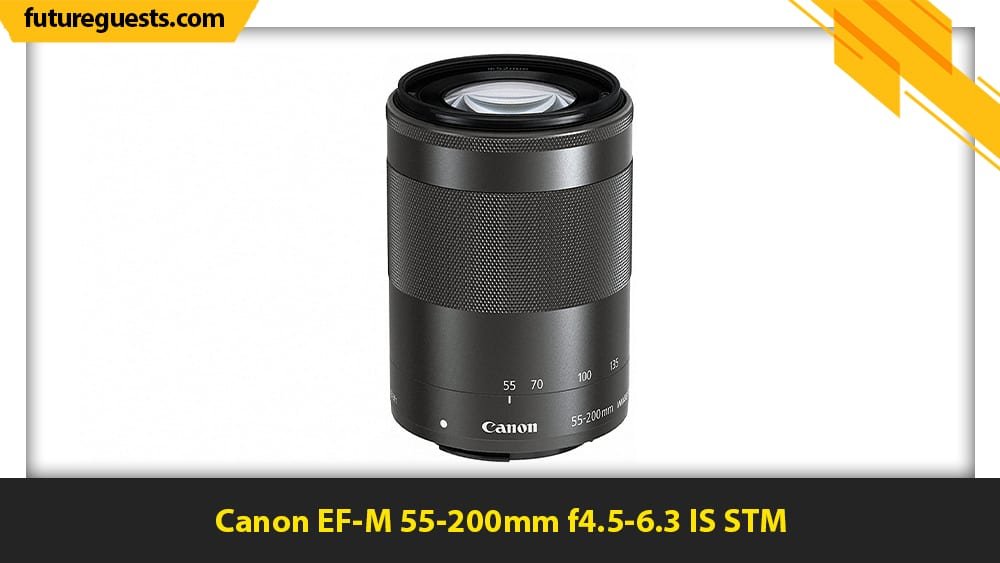
Now, we’ll take a look at our first telephoto zoom lens, the Canon EF-M 55-200mm f/4.5-6.3 IS STM with the impressive 55-200mm focal length range.
This lens is pure telephoto, so if you know for certain that telephoto is going to be your game, then this should your lens.
The zoom range is impressive and affords you a lot of flexibility.
The aperture of f/4.5 – 6.3 is a little more consistent than some other zoom lenses we’re reviewing here.
It isn’t among the brightest when at its best, but you should have less change throughout the zoom range.
This telephoto zoom lens doesn’t have as many elements as some of the other zoom lenses.
Though, the one aspherical element and one ultralow-dispersion element are on par for the telephoto lenses being reviewed, so that’s good to know.
The Optical Image Stabilizer technology compensates for up to 3.5 stops of any camera shake you may experience while shooting.
If you’re going to be taking a lot of handheld photos, especially in tough lighting conditions, this will aid you tremendously.
This lens is an autofocus lens; however, you can switch to Full-time manual focus mode, and then you’ll have control over the focus as you wish.
Along with the flexible zoom range, this telephoto lens is one of the most flexible you can find with its specs. Important for all your non-committals out there.
This lens has a rounded seven-blade diaphragm for all the bokeh you can capture.
It weighs 260 grams, technically the second heaviest zoom lens. But this is comparable in weight to several others.
The cost ranges from $245.00 – $349.00, which finds itself around the middle of the pack.
This is a decently priced telephoto zoom lens that’s equipped with lots to love.
Pros
- One of the largest zoom ranges; great telephoto range
- Equal amount of aspherical and low-dispersion elements; the latter is ultra-low dispersion element in fact!
- This lens is autofocus but you can switch to full-time manual focus mode if you desire to
Cons
- Worst aperture range of all the zoom lenses
- No mention of special coatings
- Tied with 18-200mm focal length range for farthest telephoto view but doesn’t go nearly as wide
Expert Opinion:
10. Tamron 18-200mm f/3.5-6.3 Di II VC
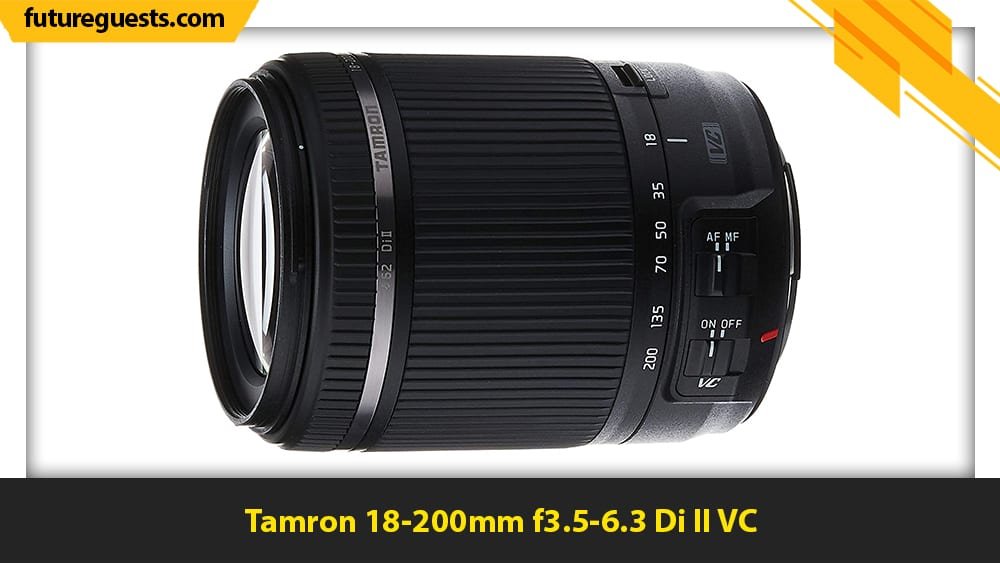
If you’re searching specifically for the most flexible zoom range, then end your search here as you find the Tamron 18-200mm f/3.5-6.3 Di II VC.
This wide-angle to telephoto zoom lens has an 18-200mm focal length range.
It’s tied with farthest zoom of 200mm and has one of the widest angles of all the zoom lenses.
It’s not quite as wide as you can get, but it’s not far off.
The first two lenses afford you a slightly wider angle, but this one lets you shoot any variety of subjects, near or far.
If you’re unsure about what you want to be shooting, or if you feel your type of photography will change week to week, day to day, then this lens is the all-around option for you.
The f/3.5 – 6.3 aperture range is right on par with the others.
Not consistent, but at its best, it is tied for the fastest aperture. At its worst, tied for the least bright.
In terms of elements that this lens possesses, there’s one hybrid aspherical element and one low-dispersion element to limit some aberrations of varying types.
Again, not the largest number of elements among the zoom lenses, but for lenses that have a telephoto range, this is just about on par with the normal.
With this zoom lens, you’ll be shooting with a rounded seven-blade diaphragm, which will allow you to capture some beautiful bokeh.
And don’t forget about the moisture-resistant construction, which will allow you to work in all types of inclement weather conditions.
Pair these together for the best lens for Canon EOS M6 Mark II when it comes to capturing bokeh outdoors, no matter the weather.
The Tamron is an autofocus lens and has a DC motor gear train AF drive module, which will assist in quick and near-silent autofocusing.
This is a nice plus for you, whether you’re using the video application or just plain photographing.
This lens’s minimum focus distance is 49cm which isn’t so low. It’s also not bad considering the impressive zoom range you’ll have.
Something that could be a downside for you: the weight is 400 grams.
It’s the heaviest zoom lens which you’re adding onto a camera that isn’t the lightest.
But if you’re looking for the best zoom capability, this is the lens for your Canon EOS M6 Mark II.
The biggest shock of all with this lens, it’s the cheapest zoom lens here, at just about $199.
With the zoom range and weight being such high numbers, you might’ve assumed that the price tag would have some high numbers as well, but to quite contrary, this is an affordable zoom lens.
Pros
- Largest zoom range with 18-200mm; fantastic telephoto views
- Cheapest zoom lens
- The minimum focus distance is 49cm which is impressive for a lens with such deep telephoto capacity
Cons
- Aperture range contains both best and worst aperture, large variance
- Heaviest zoom lens
- Just one low-dispersion element and only one aspherical element
Expert Opinion:
Best Lenses for Canon EOS M6 MARK II — Buyers Guide
Now, we’ve gone through a lot of details for a lot of different compatible best lenses for Canon EOS M6 Mark II.
As you can see, there are lots of great options. Each lens has similarities with the others, but every single one has differences that make it unique.
Whatever it is you would like to do with your Canon EOS M6 Mark II, the right lenses are listed above for you.
Now it’s just a matter of finding which is the best lens for your Canon EOS M6 Mark II.
So… what do you want to do with your camera?
You likely had some ideas before you began reading this article.
Perhaps after reading some of the qualities the lenses possess, and some of the feats they can accomplish, you may have gained new ideas.
And that’s alright.
The more the ideas, the better.
Everything you want to accomplish with your Canon EOS M6 Mark II and your new lens or lenses, we’re going to make sure you can accomplish with ease.
Some of these lenses could be considered specialty lenses, and some of them cover plenty of bases.
So, let’s take a look at some commonly asked questions when referring to these lenses, and we’ll make sure to cover all areas we can so that you can make an informed buying decision.
What are the cheapest lenses for Canon EOS M6 Mark II?
For prime lenses, that would be the Canon EF-M 28mm f/3.5 Macro IS STM.
If it’s the cheapest zoom lens you want, and the overall cheapest lens in general, go with the Tamron 18-200mm f/3.5-6.3 Di II VC.
What are the best lenses for Canon EOS M6 Mark II if we’re talking about great bokeh?
For prime lenses, I call this one even. You should choose either the lightest one, the Canon EF-M 28mm f/3.5 Macro IS STM.
Or go with the brightest aperture, the Canon EF-M 32mm f/1.4 STM.
For zoom lenses, you can pick any one of them.
They all have a rounded seven-blade diaphragm.
They should all be fantastic for creating amazing shots with bokeh.
You should likely look to another important feature to distinguish amongst the zoom lenses.
What are the best landscape lenses for Canon EOS M6 Mark II?
If we’re talking zoom lenses, then choose the widest-angle lens, the Canon EF-M 11-22mm f/4-5.6 IS STM. It is fairly light as well.
The Canon EF-M 15-45mm f/3.5-6.3 IS STM is a close second. You may want to consider this, if you’re okay with not having the widest possible angle, but interested in perhaps some flexibility and also have an even lighter lens.
The Canon EOS M6 Mark II is not a particularly light camera, so dropping weight on the lens could be a big deal for you if you’ll be holding it for a long time.
For a prime lens, I pick the Samyang 10mm f/2.8. The widest angle available there.
What are the best lenses for Canon EOS M6 Mark II if I want fast aperture?
For prime lenses, the Canon EF-M 32mm f/1.4 STM has the fastest aperture.
For zoom lenses, we need to distinguish some things.
The following two zoom lenses have, at their best, the brightest aperture.
But at their worst, as the aperture varies throughout the zoom, they have the worst aperture.
Canon EF-M 15-45mm f/3.5-6.3 IS STM
Tamron 18-200mm f/3.5-6.3 Di II VC
And this following lens, at its best, has the brightest aperture of the zoom lenses as well. But its worst is not as bad as the previous two.
Canon EF-M 18-55mm f/3.5-5.6 IS STM
This gives you some more consistency.
If you want fast aperture that is completely consistent, then consider sticking with the prime lens, the Canon EF-M 32mm f/1.4 STM.
What are the best lenses for Canon EOS M6 Mark II if I want to capture the most stunning colors in my photography?
For prime lenses, you want the Rokinon 12mm f/2.0 NCS CS with its leading number of low-dispersion elements to stop chromatic aberrations in their tracks.
For zoom lenses, I’d choose the Canon EF-M 11-22mm f/4-5.6 IS STM, which also has the most low-dispersion elements in its group.
If I want to shoot in black and white, then what are the best lenses for Canon EOS M6 Mark II?
Plenty of the prime lenses would work fine, but I’d choose the lens that doesn’t include any low-dispersion elements, and rather dedicated the lens to having the best qualities in other arenas.
And for prime lenses, that would be the Canon EF-M 32mm f/1.4 STM.
For the same reason, I’d choose the Canon EF-M 15-45mm f/3.5-6.3 IS STM or the Canon EF-M 18-55mm f/3.5-5.6 IS STM if I was looking at zoom lenses.
What are the absolute best lenses for Canon EOS M6 Mark II if I don’t care about the price?
For prime lenses, I say you should choose either the Samyang 10mm f/2.8 for its extremely wide angle and ability to capture landscapes and such.
Or, what I lean more towards in a close race, the Canon EF-M 32mm f/1.4 STM which has the fastest aperture among the other great qualities.
For zoom lenses, rating them on sheer quality, I would likely pick the Canon EF-M 11-22mm f/4-5.6 IS STM.
But I also feel like, if I want a zoom lens… I want it to really be a zoom lens… and that notion leads me to also say the Tamron 18-200mm f/3.5-6.3 Di II VC.
What are the best lenses for Canon EOS M6 Mark II if I want to get the best value?
For prime lenses, I’d say one of the two choices:
Either the Canon EF-M 28mm f/3.5 Macro IS STM as first, it is the cheapest lens here.
Two, it’s the lightest and the Canon EOS M6 Mark II not being the lightest camera, that’s a plus.
Three, it has plenty of great qualities, including a variety of elements, for its low price point.
And the lower aperture may not be of a huge concern since the Canon EOS M6 Mark II is great for flash photography and dealing with low-light situations.
The other choice would be the Rokinon 12mm f/2.0 NCS CS.
If aperture is a concern to you, its aperture is much better.
It’s got a nice wide angle, it’s still somewhat on the light side, not too expensive, and has more elements than any of the rest to prevent aberrations, among plenty of other great qualities.
For zoom lenses, it’s a much easier call to make for me.
The Tamron 18-200mm f/3.5-6.3 Di II VC.
Zoom your heart out with this lens.
Best zoom range, it’s the cheapest, and in a field where there isn’t a clear-cut winner for best aperture, it’s right there in the mix.
Very little downside with this lens.
Best Lenses for Canon EOS M6 MARK II — Conclusions
There’s plenty of styles and interests when it comes to photography and creating stunning videos.
As you can see, there’s plenty of different directions you could then take when choosing the best lenses for Canon EOS M6 Mark II.
We’ve gone down all the avenues and all the possible side streets.
However, it is you’ll be shooting, whatever you’ll be shooting, we’ve explored that genre.
And we know the best choices for you and your desire.
Some of these lenses even double up and can appeal to multiple different desires you have.
And finding the lens that accomplishes everything you want is the key.
You’ll be able to make your choice with ease now.
We know the ins and outs of all these compatible best lenses.
Just to go over some quick guidelines and reminders…
HEADLINES
- We know wide-angle means better lenses for landscapes, real estates and such. So, your best bets for those scenarios would be either the Samyang 10mm f/2.8 or the Canon EF-M 11-22mm f/4-5.6 IS STM.
- If you have trouble with low-light situations, faster aperture is key for you, and the best lens for Canon EOS M6 Mark II in those situations, would be the Canon EF-M 32mm f/1.4 STM.
- If you’re new to photography, but you know you’re going to be using your camera a lot, you probably want something of good quality but don’t want to drop too much money on something in your early stages.
The best value lenses are the prime lens, Canon EF-M 28mm f/3.5 Macro IS STM and the zoom lens, Tamron 18-200mm f/3.5-6.3 Di II VC.
- If telephoto is your game when it comes to photography, the easy choice for a zoom lens is the Tamron 18-200mm f/3.5-6.3 Di II VC. The easier choice, or prime and overall, is the Samyang 300mm f/6.3 Reflex.
- Maybe it’s close-up details you’re most interested in. Then go Macro with the Canon EF-M 28mm f/3.5 Macro IS STM.
And no matter what you’re going to set out to accomplish with your new Canon EOS M6 Mark II, pairing it with one or more of the suggested lenses is going to aid in you creating some amazing arts.
Time to get snapping!








